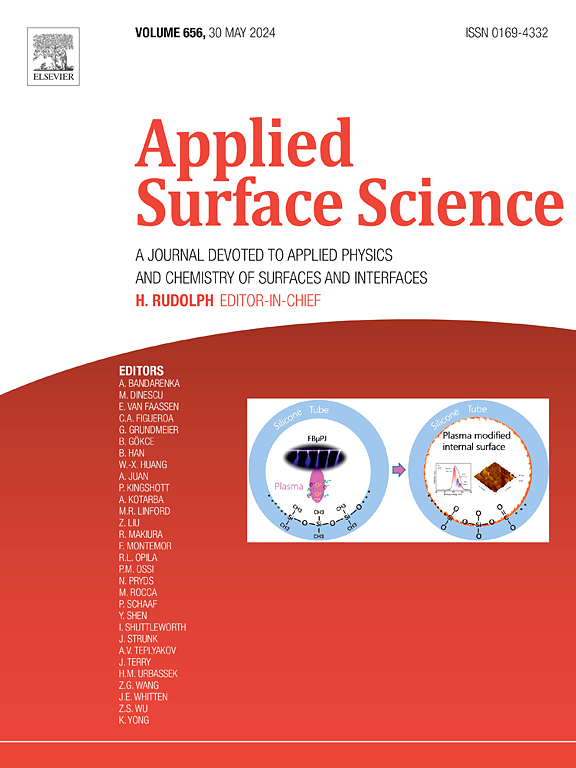Boosted photocharge separation in copper (II) porphyrin grafted high-entropy halide perovskite for selective CO2 photoreduction
IF 6.3
2区 材料科学
Q2 CHEMISTRY, PHYSICAL
引用次数: 0
Abstract
Photocatalytic conversion of CO2 into fossil fuel remains a challenge due to the limited CO2 adsorption and activation capability of catalysts. High entropy alloys are emerged as a new class of catalysts in the field of energy conversion, however, the extremely high preparation temperature requirement limits their further application. In this work, we used a low-temperature solution syntheses (75 °C) to achieve a high-entropy halide perovskite catalyst and applied it in the field of CO2 photoreduction. The ability of Cs2Ag{InPrCeGdTb}1Cl6 for CO2 photoreduction was confirmed. To further improve its photocatalytic property, the copper (II) porphyrin ligand was directly grafted on the surface of Cs2Ag{InPrCeGdTb}1Cl6. The copper (II) porphyrin ligand could serve as adsorption sites to enhance the CO2 adsorption capacity. Moreover, the photocharge carrier separation was efficiently improved via the directional transfer of electrons from catalyst to copper (II) porphyrin ligand, thus achieving a CO yield of 83.26 µmol g-1h−1 with nearly 100 % product selectivity after photocatalysis. This work provides a practical strategy for low temperature synthesizing modified high-entropy halide perovskite catalysts applied for solar energy conversion.

铜(II)卟啉接枝高熵卤化物钙钛矿的选择性CO2光还原促进光电荷分离
由于催化剂对CO2的吸附和活化能力有限,光催化将CO2转化为化石燃料仍然是一个挑战。高熵合金是一种新型的能量转换催化剂,但其极高的制备温度限制了其进一步的应用。在这项工作中,我们使用低温溶液合成(75 °C)获得了高熵卤化物钙钛矿催化剂,并将其应用于CO2光还原领域。证实了Cs2Ag{InPrCeGdTb}1Cl6光还原CO2的能力。为了进一步提高其光催化性能,将铜(II)卟啉配体直接接枝到Cs2Ag{inprceegdtb}1Cl6表面。铜(II)卟啉配体可以作为吸附位点,提高CO2的吸附能力。此外,通过电子从催化剂向铜(II)卟啉配体的定向转移,光荷载流子的分离得到了有效的改善,从而实现了CO产率为83.26 µmol g-1h−1,光催化后的产物选择性接近100% %。本研究为低温合成用于太阳能转换的改性高熵卤化物钙钛矿催化剂提供了可行的策略。
本文章由计算机程序翻译,如有差异,请以英文原文为准。
求助全文
约1分钟内获得全文
求助全文
来源期刊

Applied Surface Science
工程技术-材料科学:膜
CiteScore
12.50
自引率
7.50%
发文量
3393
审稿时长
67 days
期刊介绍:
Applied Surface Science covers topics contributing to a better understanding of surfaces, interfaces, nanostructures and their applications. The journal is concerned with scientific research on the atomic and molecular level of material properties determined with specific surface analytical techniques and/or computational methods, as well as the processing of such structures.
 求助内容:
求助内容: 应助结果提醒方式:
应助结果提醒方式:


